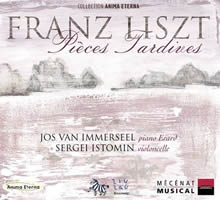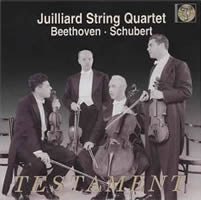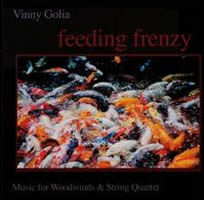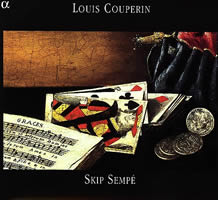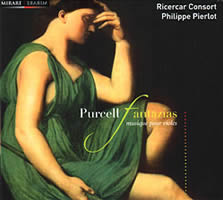Words Fail Me 2.
|
Words Fail Me 2. Bart Scribner [August 2007.]
Franz LISZT: Pièces Tardives. Jos van Immerseel (pno), Sergei Istomin (vc). Zig Zag Territoires ZZT 040902 (http://www.zigzag-territoires.com/). Late Liszt is terrain as well as timeline — the bleak, haunted miniatures that glimpsed the future. Van Immerseel’s 1886 and 1897 Erards (the latter in the duos) penetrate this unstable world, their rapid decay highlighting the stark textures. Hitting hardest are the memorial Am Grabe Richard Wagners (where’s its companion, R.W. – Venezia?), some elusive Nuages gris, a pealing Magyar dance, and the chorale-like Abschied. Elsewhere, Istomin’s slender cello lines hardly reduce the disquiet. Spectacular sound.
Ludwig van BEETHOVEN: Quartet No. 14 in C-sharp minor, Op. 131 (1825-6). Franz SCHUBERT: Quartet No. 14 in D minor, D. 810, “Death and the Maiden” (1824). Juilliard Quartet (Robert Mann and Isidore Cohen, vlns; Raphael Hillyer, vla; Claus Adam, vc). Testament SBT 1373 (http://www.testament.co.uk/). Distributed in the US by Harmonia Mundi (http://www.harmoniamundi.com/). These Juilliard Quartet recordings came out on RCA in 1962 and 1960 — during my high school daze. Hearing pillars of the repertory done with the attack and keen scrutiny the group brought to Bartók and Schoenberg was — and is — thrilling. Confrontation naturally becomes Op. 131; this is Schubert pressed into heroic mode, and overtly high tension. Clean and clear studio sound in the Beethoven. The Schubert, taped at the Academy of Arts and Letters, is rather more metallic.
Vinny GOLIA: feeding frenzy: Music for Woodwinds & String Quartet (2002). Golia (fl, cl), Ludwig Girdland and Harry Scorzo (vlns), Jonas Tauber (vc), Ken Filiano (bs). Nine Winds NWCD0229 (http://www.ninewinds.com/). I wondered how a string quartet (even one with a hole in the middle) might affect Golia’s avant-jazz manner. The plush movie-palace harmonies of Biograph don’t count. His dialogues with bassist Filiano have shape and development, and I can admire the stagecraft (his frequently sly entrances). Rambling, episodic tracks are the norm, and extricating what’s brilliant from the half-baked would require surgery (cutting into pitch-bending and multiphonics). Yes to the contrabass clarinet, though.
Louis COUPERIN: Suites in F, A, D, A, F and C; Pavanne in F-sharp minor. Skip Sempé (harpsichord). Alpha 066 (http://www.fugalibera.com/). Distributed in the US by Forte Distribution LLC (http://www.fortedistribution.com/). Sempé likens Louis Couperin (c. 1626-1661) more to Marais than to other clavecinistes. Accordingly, he lends the Suites (fashioned from Louis’ works in a given key) an extravagant and mercurial profile. Of special interest is the Marais prélude, transcribed from the viol original (Couperin also played fiddle). A robust 1985 Bruce Kennedy model transmits Sempé’s forceful ideas, which fill the resonant venue (a hospital chapel) even on stately Sarabandes. Monsieur Blancrocher’s fatal fall is rattlingly conveyed.
Henry PURCELL: Fantazias: Musique pour Violes. Ricercar Consort, Philippe Pierlot (dir.). Mirare MIR 012 (http://www.mirare.fr/). Distributed in the US by Harmonia Mundi (http://www.harmoniamundi.com/). Purcell’s 15 Fantazias for viols contain dizzying contrapuntal games, quick “cutting” as transitions and wrenching chromatic harmonies (in his 21st year!). One needs to fast-forward to the mature string quartet for their equal. The Ricercar Consort isn’t a true viol group but a Baroque band in ad hoc formation. The rich ensemble tone has appeal (unison moments resemble organ stops), but detailed solutions aren’t attempted. Stick with Fretwork (finesse), Phantasm (intensity) and Hespèrion XX (mood swings).
[More Bart Scribner, Words Fail Me]
[Previous Article:
EA Bucket 6: Historic Releases]
[Next Article:
Boo Hoo]
|
